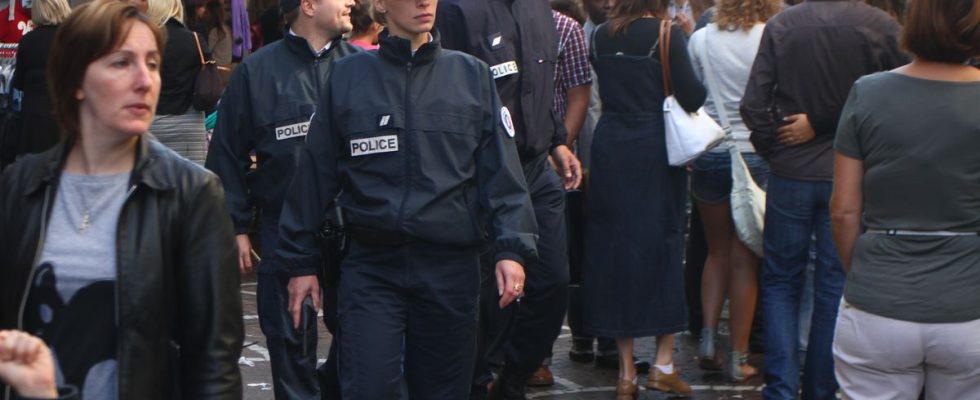The 2023 edition of the Braderie de Lille was a success. Crowded, ideal weather, all-you-can-eat mussels and fries. But this beautiful popular festival was also an opportunity for the identity women of Némésis to get people talking about them, at least on “X”. Three members of the small group, including its leader, Alice Cordier, have deployed huge banners to denounce what they consider to be a failing security policy in the city.
Saturday afternoon, from the balcony of an apartment on rue Nationale, the identities of Némésis unfurled a first banner stating “Lille is becoming Saint-Denis, who is the cause of our worries? “. Then another, from the balcony of a suite at the Carlton Hotel, still in the city center. On it, we could read: “Salafist readings in high schools in your city, do you feel safe at the Braderie de Lille? “. It is this last action that will earn Alice Cordier and two other activists to spend 18 hours in police custody. Previously, the leader of the movement had trapped the Minister of the Interior, Gérald Darmanin, asking him to pose for a selfie before presenting himself.
A ranking based on official but incomplete data
In short, in the process, the mayor of Lille, Martine Aubry, had announced that a complaint was going to be filed, assuring the identity leaders: “You have no place in our city, with these ideas contrary to the DNA of Lille residents. “. It was enough to ignite “X” and see the activists of Némésis supported by personalities or anonymous people from the extreme right. Many denounced the police custody and others brandished a classification erecting Lille at the forefront of most dangerous cities in France, in front of Saint-Denis. Hence the reference in one of the banners.
So it’s somewhat true, but you have to put it into perspective. One of the sites presenting this classification itself warns of the “incomplete side by nature of the data on crimes and offenses which are based on the facts recorded by the Police and Gendarmerie services”. On the other hand, comparing Lille to Saint-Denis is irrelevant, the capital of Flanders having twice as many inhabitants as the city in the Paris region. Except if we refer to the rate per thousand inhabitants. In this case, according to the figures of the ” municipal statistical database of delinquency recorded by the national police and gendarmerie”, that 20 minutes consulted, the results are not flattering.
The Covid-19 effect and successive confinements
For the facts of housing burglaries recorded in 2022, for example, Lille records a rate of 8 per 1,000 inhabitants against 7/1,000 in Saint-Denis and 1/1,000 in Marseille. On the facts of “intentional blows and injuries” and “intentional destruction and damage”, the rates of Lille and Saint-Denis are equivalent (1/1,000), against 8/1,000 in the Marseille city. For the same type of facts, but in the family context, Saint-Denis (5/1,000) is above Lille (4/1,000).
It is also false, or at least dishonest, to assert that crime is increasing in general in Lille. For the five types of facts detailed in the municipal statistical database, we can see that the figures increase between 2021 and 2022, with the exception of “deliberate destruction and damage”. To our colleagues from the voice of the North, the Lille Security Deputy recalls the Covid-19 effect and the successive confinements which skew the figures for 2020 and 2021. The fact is that if we compare 2019 to 2022, the increase in figures is less marked . We go from a 22% increase in assault and battery between 2021 and 2022 to a 14.5% increase between 2019 and 2022. Better still, if home burglaries increased by 0.24% between 2021 and 2022, however, they fell by 24.3% between 2019 and 2022.

